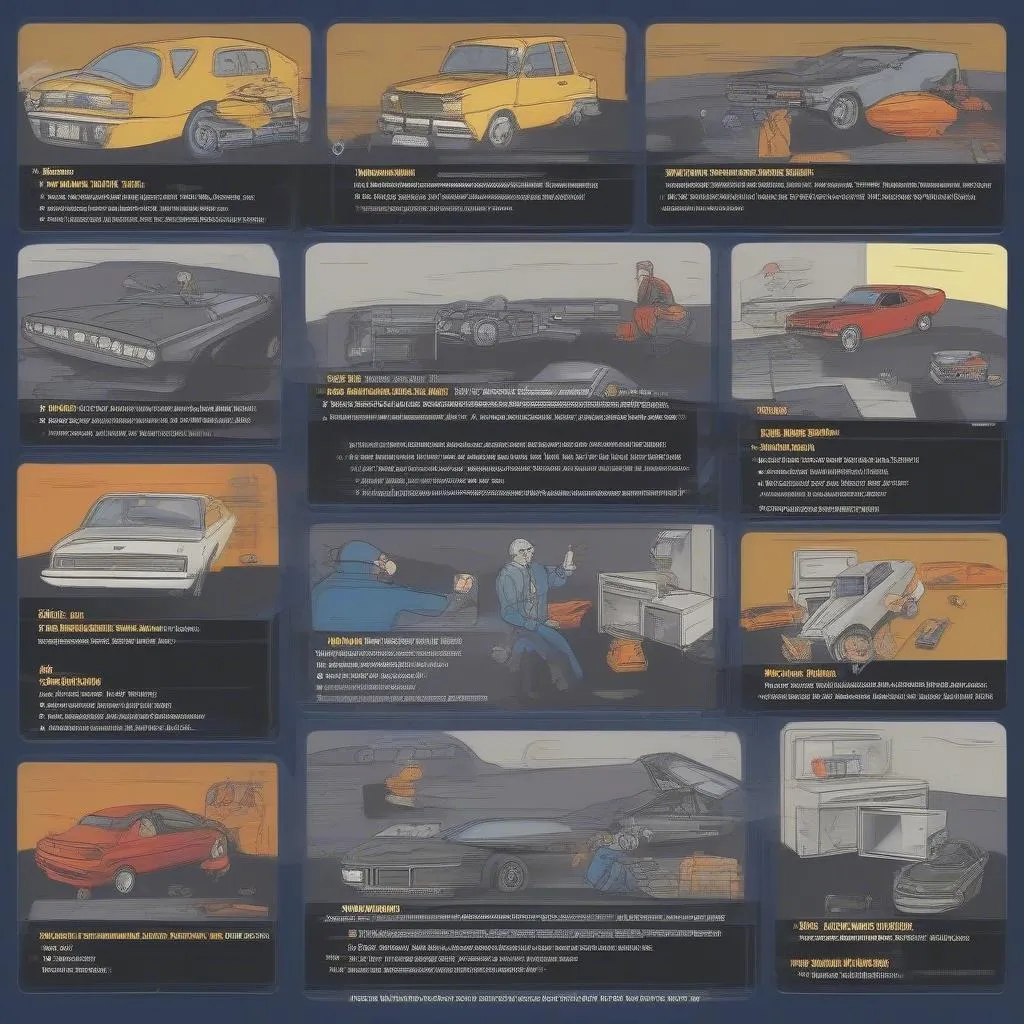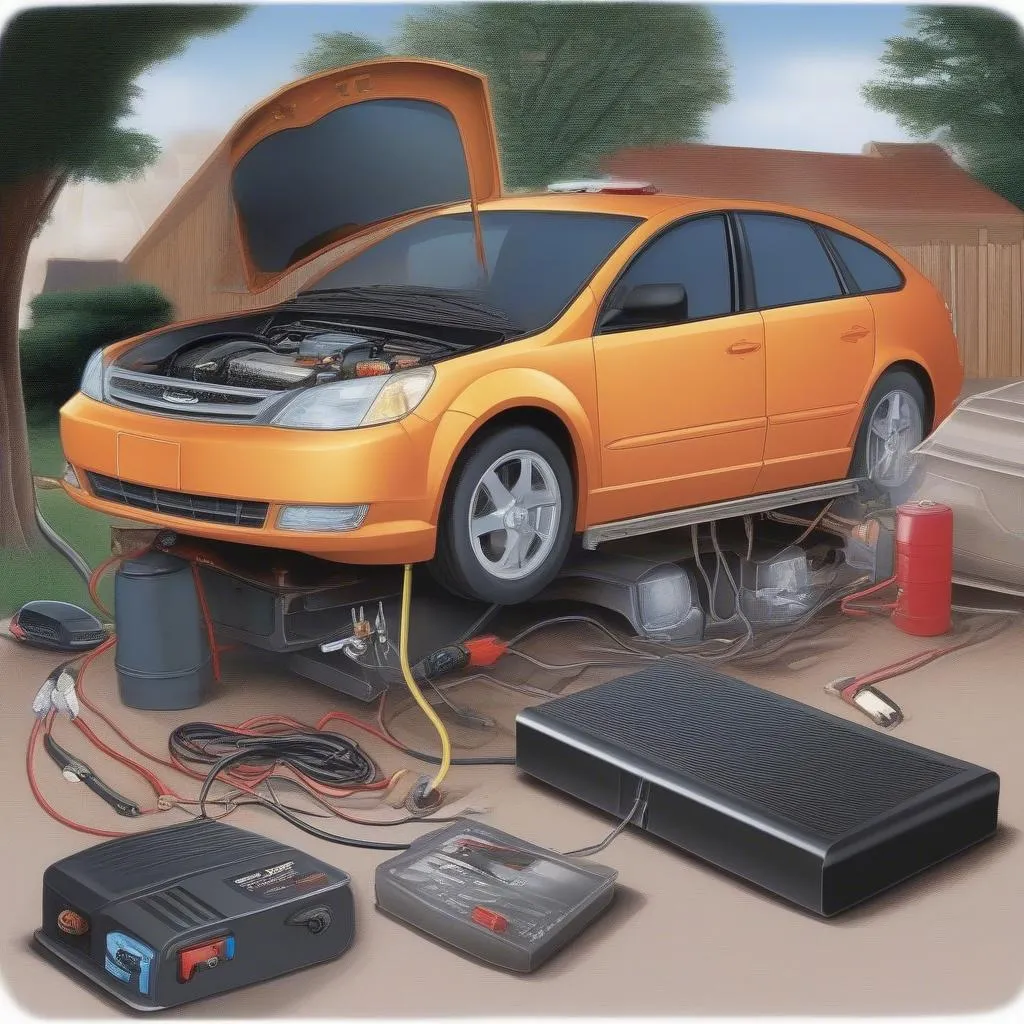Imagine this: you’re rushing to work, your coffee is brewing, and you’re ready to conquer the day. You hop into your car, turn the key, and… nothing. You try again, and again, but the engine just refuses to turn over. It’s a frustrating experience that every car owner dreads.
The dreaded “difficult to start” problem is a common issue that can be caused by a variety of factors, ranging from simple fixes to more complex issues.
Understanding the “Difficult to Start” Problem: A Deeper Dive
The Mechanic’s Perspective
For a mechanic, “difficult to start” is a symptom, not a diagnosis. It signifies that the engine isn’t receiving the necessary power to initiate combustion. This can stem from a variety of culprits within the car’s electrical system, ranging from a weak battery to a faulty starter motor.
The Technical Aspect
From a technical standpoint, a car’s starting process is a complex interplay of electrical components. The battery provides the initial electrical charge, which is then routed through the starter motor to crank the engine. If any part of this chain is disrupted, the engine won’t start.
The Economic Impact
Beyond the inconvenience, “difficult to start” problems can also have a significant economic impact. A dead battery, for instance, will require a replacement, while a faulty starter motor could involve a more costly repair. Early diagnosis and troubleshooting can help you avoid unnecessary expenses.
Diagnosing the Problem:
Common Scenarios:
- Dead Battery: This is the most common culprit. A weak or drained battery can’t provide enough power to crank the engine. Symptoms include slow cranking or no cranking at all.
 Car Battery
Car Battery - Faulty Starter Motor: The starter motor is responsible for turning the engine over. If it’s damaged or failing, it won’t be able to crank the engine properly. You might hear a clicking sound but no engine turning.
- Weak or Damaged Starter Cable: A weak or damaged starter cable can prevent proper electrical flow to the starter motor. You might hear a clicking sound, but the starter motor won’t engage.
- Fuel System Issues: A clogged fuel filter, faulty fuel pump, or problems with the fuel injectors can prevent fuel from reaching the engine. You’ll likely hear the engine cranking but not starting.
- Ignition System Issues: A faulty ignition coil, spark plugs, or wiring can prevent a spark from igniting the fuel mixture. The engine will crank but not start.
- Engine Management System (ECU) Problems: The ECU controls various engine functions. If it’s malfunctioning, it might prevent the engine from starting.
What to Check First:
- Check the battery terminals: Corrosion or loose connections can prevent proper current flow. Clean them with a wire brush and tighten the connections.
- Check the battery voltage: A multimeter can measure the battery voltage. A healthy battery should read around 12.6 volts.
- Try jump-starting the car: If the battery is weak, jump-starting it might help determine if the battery is the problem. If the car starts with a jump, it’s likely that the battery needs replacement.
 Jump Starting a Car
Jump Starting a Car - Listen for any unusual noises: Clicking sounds could indicate a faulty starter motor or weak battery.
Solving the “Difficult to Start” Puzzle:
- Battery Replacement: If the battery is weak or dead, it needs to be replaced.
- Starter Motor Repair or Replacement: A faulty starter motor may need to be repaired or replaced.
 Car Starter Motor
Car Starter Motor - Fuel System Inspection: Check the fuel filter for blockage, inspect the fuel pump, and test the fuel injectors.
- Ignition System Check: Inspect the ignition coil, spark plugs, and wiring for damage or defects.
- ECU Diagnostic: If you suspect ECU problems, a mechanic can diagnose the ECU using a diagnostic scanner, such as a Dealer Scanner For European Cars.
FAQs:
- What are some common reasons my car won’t start? A weak battery, faulty starter motor, fuel system issues, ignition system problems, or engine management system (ECU) issues.
- How can I tell if it’s a battery problem? Slow cranking or no cranking, clicking noises, or jump-starting the car being successful are signs of a battery problem.
- What does a clicking noise mean when trying to start my car? A clicking noise could indicate a weak battery, faulty starter motor, or a loose or damaged starter cable.
- Should I try jump-starting my car if it won’t start? Only if you suspect a weak battery. Ensure you follow proper jump-starting procedures.
- What is a Dealer Scanner For European Cars? A tool used by mechanics to diagnose and troubleshoot electrical issues in European cars.
- Where can I find a qualified mechanic to diagnose my car’s starting problem? Look for certified mechanics with experience in diagnosing and repairing automotive electrical systems.
Additional Tips:
- Keep your battery maintained: Regularly check the battery terminals for corrosion and ensure the battery is charged properly.
- Avoid excessive idling: Idling for long periods can drain the battery.
- Don’t neglect regular maintenance: Schedule regular servicing for your car, including inspections of the battery, starter motor, and other vital components.
Conclusion:
A “difficult to start” car can be a frustrating experience, but by understanding the underlying causes, you can diagnose and troubleshoot the problem effectively. Remember to prioritize safety and consider seeking professional help if you’re unsure about diagnosing or repairing the issue. And don’t hesitate to contact us via Whatsapp: +84767531508 for help with your diagnostic tools and support from our expert technicians 24/7.
If you’re still experiencing problems starting your car, don’t hesitate to ask for help. Leave a comment below or visit us at Diag XCar for more helpful information and resources on car care and maintenance.